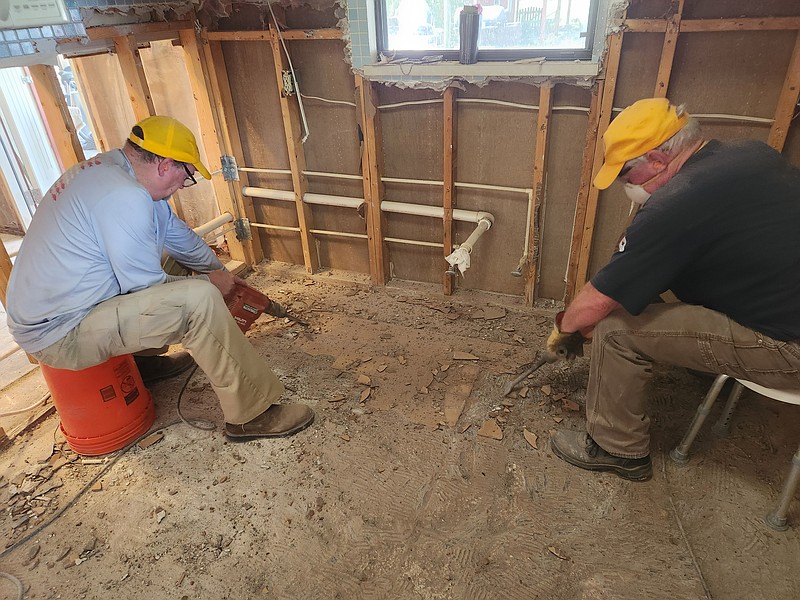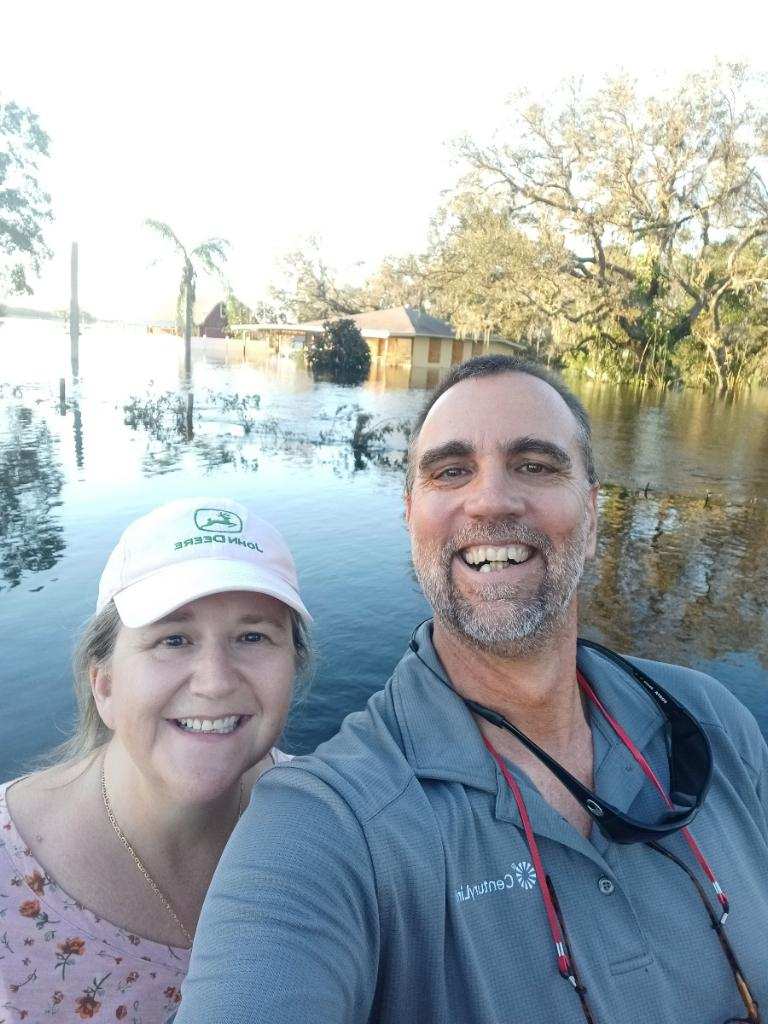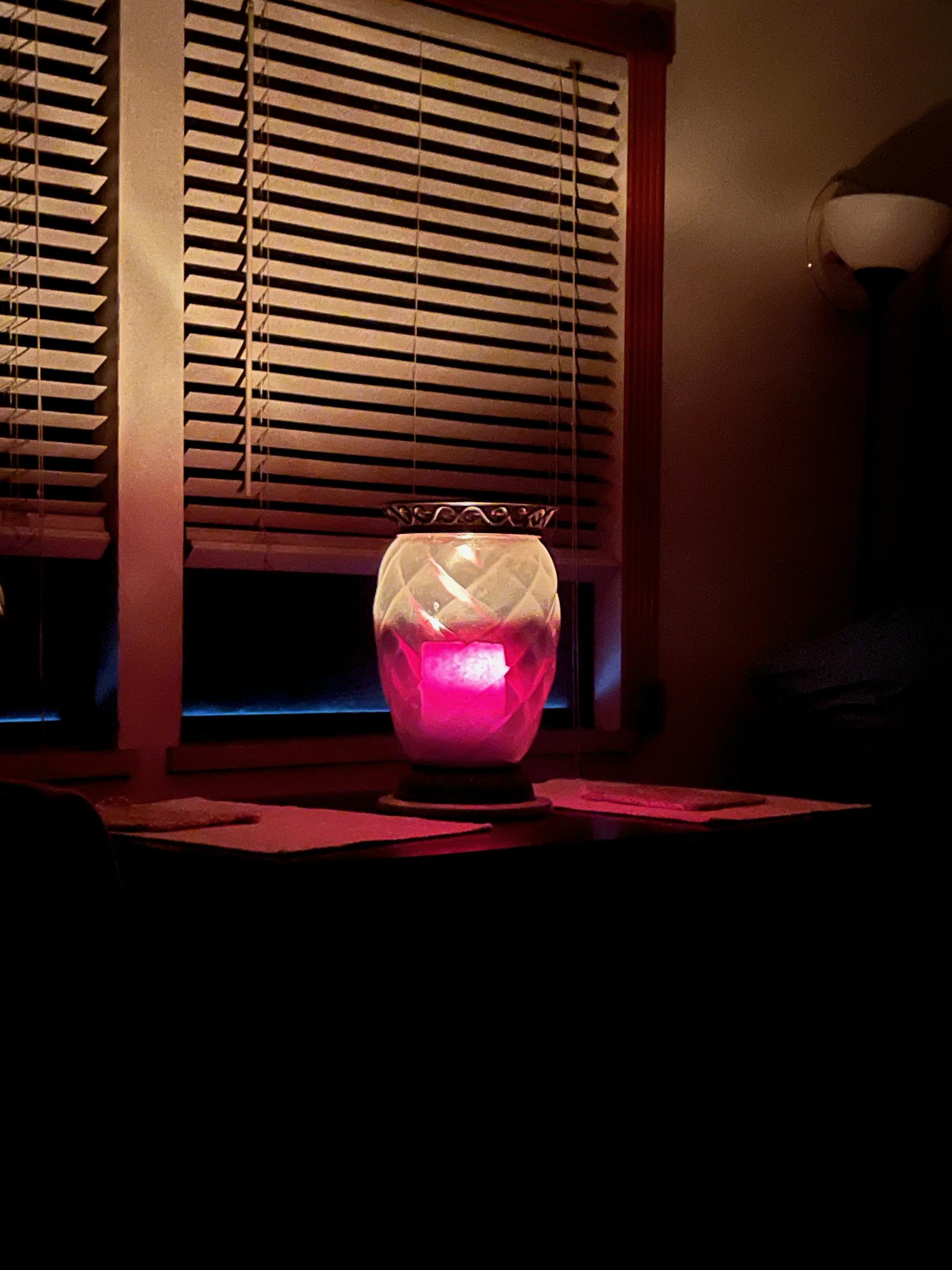The storm picked up around midnight. Power was out at Lynn Landskroner's house in rural Hardee County, Florida, and as Hurricane Ian intensified, she and her husband, Michael, went into their car for protection.
"We could feel such strength pressing in and pulling on the walls and windows," she said in a phone interview Wednesday.
They surveyed the damage the next morning. An old oak tree fell, but their house seemed relatively unscathed. Then they looked over the field.
They had never experienced flooding before, Landskroner said, but a nearby creek and river were converging, swelling into the landscape. They had just around two hours to pack their things and get out as the water rose, she said.
"It's funny," she recalled, "when you start looking at your favorite bottle of perfume vs. the deodorant."
Doyle Pittman was monitoring the Sept. 28 storm from Hamilton County. A former weatherman and current volunteer disaster coordinator for the Hamilton County Baptist Association, he's been helping people recover from catastrophes since Hurricane Andrew slammed into South Florida in 1992.
Pittman received a message from the disaster relief coordinator for the Tennessee Southern Baptist Convention asking for potential volunteers to be on standby as agencies in Florida assessed the hurricane damage and determined where and what help was needed. Pittman assembled a crew of 10 volunteers -- six, including him, from Red Bank Baptist Church, and four from other local churches.
Last weekend Pittman and the crew left for Hardee County, Florida. After a rest stop in Georgia, they arrived at noon Monday at First Baptist Church of Wauchula, preparing to get to work, Pittman said by phone.
Baptist groups from across the South were there -- dozens of people setting up cots and air mattresses, food and mobile showers. "We've pretty much taken over the whole church," Pittman said.
Southern Baptist Disaster Relief dates to the mid-20th century in Texas, and since then, the organization has joined the Red Cross and the Salvation Army among the largest disaster relief organizations in the country, according to Wes Jones, the disaster relief coordinator for the Tennessee Southern Baptist Convention.
Tennessee's disaster relief branch formed later, first responding to the 1978 Waverly Train explosion, Jones said. As of Hurricane Ian, Tennessee Baptist Disaster Relief groups have responded to 270 disasters domestically and internationally, Jones said. A huge proportion -- 117 -- of those responses have taken place in the past seven years, he said.
This year alone, Tennessee Southern Baptist volunteers have, among other things, responded to an ice storm in Memphis, coordinated supplies for the war in Ukraine and helped provide water when Jackson, Mississippi's became undrinkable, he said.
In August, David Maddox of Ridgedale Baptist Church went to Kentucky to help clean up after the flood that ravaged the state.
Maddox heard about disaster relief work through a friend. Like many such volunteers, he is retired.
"I had plenty of time on my hands," he said, and it seemed like a good way to spend his time. "I don't want to brag, but I've always tried to be helpful to people."
He trained at Brainerd Baptist Church. To be a certified disaster responder, potential volunteers must go through an initial brief training and then a subsequent specialized training, before passing a background check, according to Jones.
At training, Maddox learned about first aid and drywall removal, he said. Such post-disaster cleanup work has become something of a specialty for the Baptists, Dennis Culbreth, director of missions at the Hamilton County Baptist Association, said in a phone interview.
While such distinctions are not formal, different ministries have developed reputations in different areas of disaster relief. The Seventh-day Adventists expertly distribute supplies, Jones said. "The Methodists are pretty good on the rebuilding side," he added.
New specialities are always emerging. Just this year, Tennessee Southern Baptists developed a swift water rescue team, with drone capability, Jones said.
In Kentucky, Maddox did "mud-out" work -- stripping homes that were flooded of flooring and sheet rock, spraying it for mold that might, unchecked, ultimately render the whole house uninhabitable. It's "dirty nasty work," he said.
This, largely, has been the focus of Pittman and his team in Florida this week. The group arrived Monday at Landskroner's house, which she and her husband hastily vacated (she took the deodorant instead of the perfume) as water rose up to 3 feet, by her estimate.
When it was safe to return, a volunteer team from Lenoir City, Tennessee, completed a first batch of cleanup. There was a lot to do. An assessor had determined the house needed to have all drywall 2 feet above the water line and below removed, Landskroner said. This meant removing the sinks, toilets and showers. "Let's just call it gutting the house," she said.
Often, disaster victims find help through flyers or word of mouth, Pittman said. Landskroner, however, is a member of the First Baptist Church of Wauchula, she said. As she and her husband slept in a neighbor's house, she prepared the church to host the volunteers. Her deacon knew she could use the help, she said, and got her on the list with the incident commander working out of the church.
That was Kaye Thomas, a member of the First Baptist Church of Sevierville in East Tennessee. She and her husband have been doing disaster relief for decades -- typically hurricane seasons, recently all throughout the year, as she jumps between fires, floods, tornadoes. "In the Southern Baptist Church, we say we are the hands and feet of Jesus,'' she said by phone from Wauchula.
"The main reason that we do all of this is so that we can share Jesus," she said. "No, we don't like to clean mud out of a house. Chainsaw is hard work. Tarping is hard work." But she said the work gives them an opportunity to expose people to her faith.
When the cleanup work was done, Landskroner said the visiting volunteers presented her with a Bible, in which the crew members inscribed notes. One volunteer wrote his wife's favorite Bible verse, she said.
The cleanup task before Landskroner and her husband remains formidable. Since technically they do not live on a flood plain, she and her husband did not have flood insurance, she said. She's been rejected on an insurance claim they did file -- though that rejection is a prerequisite, she said, for potential relief from the federal government, which sent an official this week to inspect the damage.
For now, she and her husband turn to the immediate task: get a small bathroom and shower running, and a temporary bedroom, so they can stay in the house as they rebuild. But "humankind comes together in times like these," she said. "Throughout the entire process, I can see God connecting the dots."
Contact Andrew Schwartz at aschwartz@timesfreepress.com or 423-757-6431. Follow him on Twitter @aonSchwartz.


